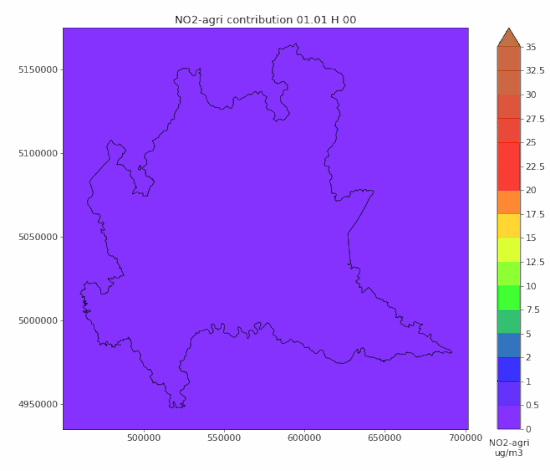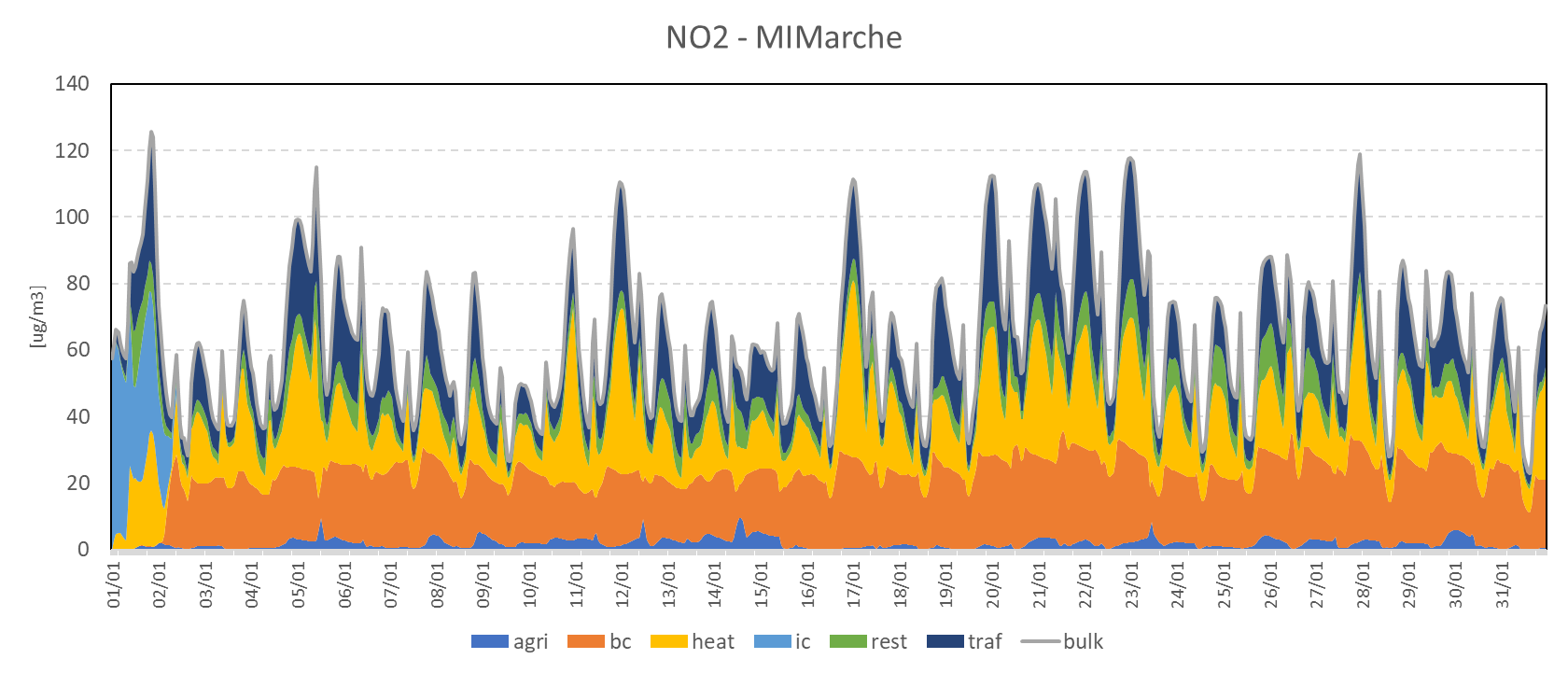ORSA
FARM can track the contribution to concentrations from different groups of sources through.
ORSA: On-line Reactive Source Apportionment.

FARM can track the contribution to concentrations from different groups of sources through.
ORSA: On-line Reactive Source Apportionment.
Emission sources are grouped in sets that can correspond either emission sectors/categories, or to geographical areas, or a combination of both.
Each source set is described by means of separate input emission files (gridded and point sources), carrying a fraction of the total emissions assigned for a model run.
The evolution of the emissions from each source set is then followed through a set of reactive tracers (“tags”) that undergo the same physical and chemical processes of the regular (“bulk”) model species. Additional tags enable tracking the contributions from initial and boundary conditions.
For each chemical species, the sum of all its tags (all source sets + IC + BC) is always equal to its total concentration.

For example, the total NO2 concentration is always the sum of NO2-IC, NO2-BC, NO2-traffic, NO2-heating, NO2-agriculture, NO2-other, if emissions are grouped in the four sectors: traffic, heating, agriculture, other sources.
Tracers are “reactive” because they are followed through chemical reactions. As a consequence, the contribution of each source set for a particular species, say NO2, also depends on emission sectors (or areas) of other precursor species, i. e. species that act as a reagent in chemical reactions producing NO2.
The evolution of reactive tracers is followed by the model using – as much as possible – the same algorithms used for bulk species, thus maximizing consistency between the former and the latter (and preserving code modularity).